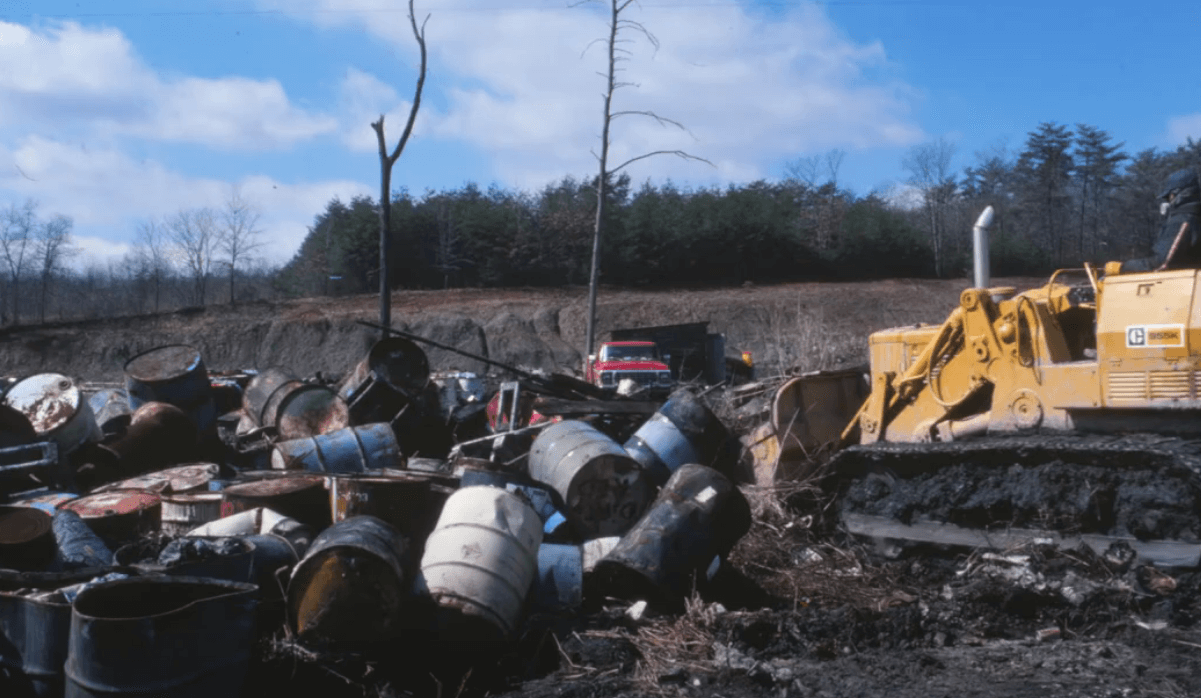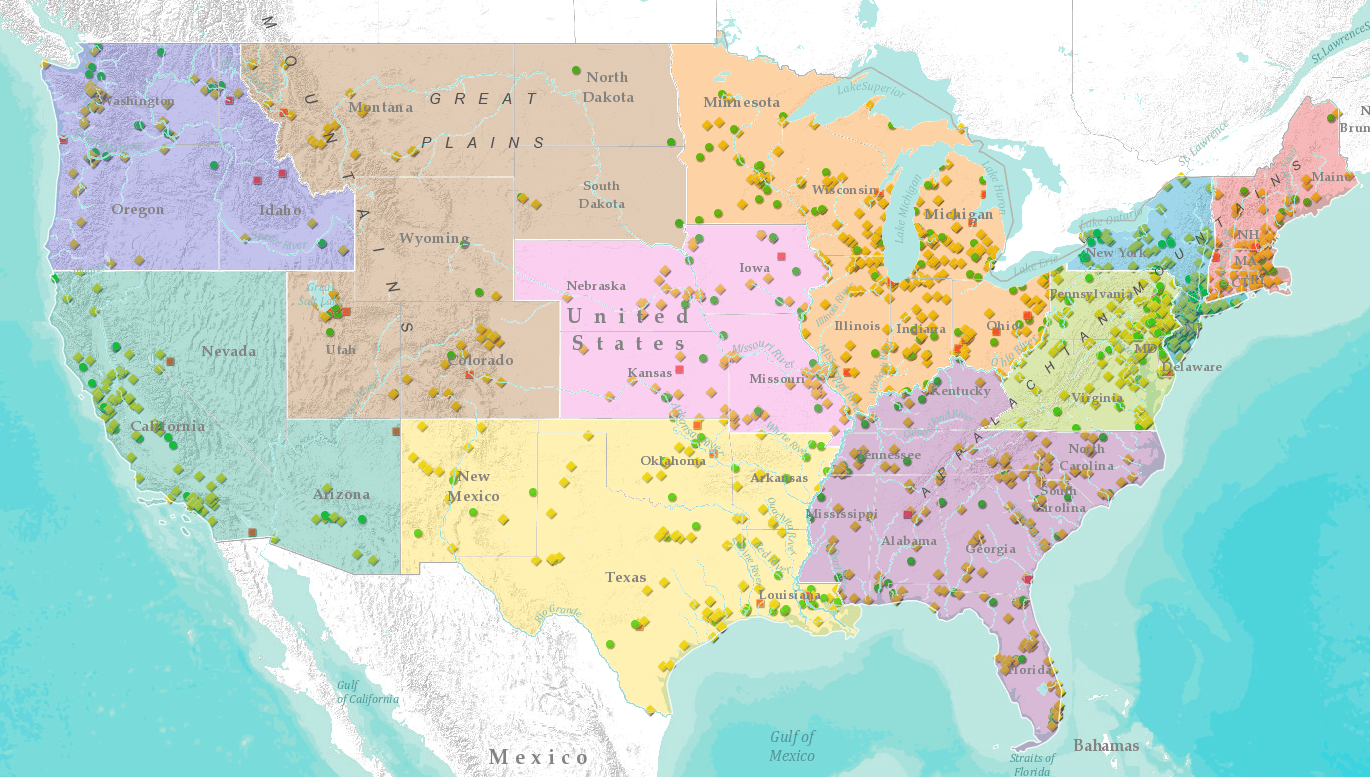Superfund Sites

A few months ago through work I stumbled upon the term Superfund and a few days later had a pretty good understanding of the term. Taking that term back to some friends it seemed that no one else understood it. This must be a flaw of being born after 90% of this was established and not remembering hearing the term once in school.
So for those unaware Superfund is the informal term of the Comprehensive Environmental Response, Compensation and Liability Act (CERCLA). This in basic English means the Environmental Protection Agency (EPA) may identify and clean up contaminated sites - while finding and forcing the associated party to pay or clean it up themselves.
So lets turn back the clock and see why this started and some of the big reasons it began.
1962
- Marine Biologist Rachel Carson has concern about water and air pollution from the rise of company engineering or waste disposal.
1970
- Public concerns quite high with how a city deteriorated with contamination.
- Nixon signs the creation of the EPA thus creating a new agency.
- Earth Day is created.
1976
- Resource Conservation and Recovery Act (RCRA) is enacted to combat the midnight dumping of toxic waste.
- Toxic Substances Control Act (TSCA) allows EPA to limit the acquisition of toxic chemicals through processes.
1976-1979
- National coverage of fire of waste drums in New Jersey.
- State of Emergency at Niagara Falls.
- Hearings on hearings about toxic waste.
1980
- CERCLA enacted by Congress, which added a tax on potentially hazardous substances to fund the program.
- National Contingency Plan (NCP) begins with the procedures on how to respond to discovered hazardous sites.
1982
- Hazard Ranking System (HRS) is invented to help classify and evaluate the danger of a discovered hazard site.
1983
- Leveraging the HRS scale, EPA creates the National Priorities List (NPL) which lists and classifies sites requiring long-term cleanup supported by the Superfund.
1984
- Amendments to RCRA to force treatment of waste prior to disposal.
1986
- Right-to-know added into Superfund amendments so residents can be aware of nearby incidents.
- First site "removed" from NPL list after recovery known as Friedman Property.
- Superfund Amendments and Reauthorization Act (SARA) passed to beef up the CERCLA process for long-term remedies and involving local government more.
1989
- EPA adapts to "Enforcement First", which moves the priority to finding the party at fault to assign responsibility.
1990
- Oil Protection Act enacted forcing the cleanup cost of oil spills to be handled by the oil handling industry.
- EPA revises the scale of HRS based on SARA to more accurately access danger to a human.
2010
- 40th Anniversary of EPA, which has just been slightly amended or streamlined in the past 20 years.
So lets take a look at one of the first sites.

This was a big discovery - it was found that nearly 27,000 drums were buried and near 100,000 drums were just emptied and dumped into trenches in the 23-acre site. So from the 1960s to 1980s drums were disposed of here and a tough story follows to discover who is responsible.
Unlike today where property records are quite documented - the responsible party for this site was someone known as A.L Taylor who died in 1977. However, its clear that with the site being a primary dumping location it couldn't have been a solo effort.
So clearly the snow melt and weather carried the waste around the ground and was becoming a large environmental nightmare. Alongside the discovery of the Love Canal disaster it was becoming clear that this discovery was even worse. So even though in 1982 the site was proposed it took into 1996 when the site was finally removed from the Superfund site list after extensive cleanup.
So 14 years of cleanup, but even that isn't fair to say. Since they continue to find environmental issues around that area as recent as 2008. The point of this is to say that the carelessness of waste disposal had huge implications that still haven't been fully discovered. A good recap of this specific site can be found here at the ArcGIS story map.
However, even with all this regulation there are still some disasters that are tough to fully understand or resolve.

Take the DDT dump site off the L.A coast which discovered 27,000~ barrels of assumed DDT at the bottom of the seafloor. You can read the breakdown on the EPA site and learn it scored 32.10 on the HRS score, which is small knowing it goes up to 100, but anything over 28 will go on the NPL list. It looks like a cleanup that'll never end when you consider it was broken up into units:
- Soil near property
- Storm-water pathway
- Ground water pathway
- Dense non-aqueous phase liquid cleanup
- Historic storm-water pathway
- Palos Verdes shelf
- Historic storm-water south pathway
- and more
It just looks like its incredibly easy to damage the environment and incredibly more difficult to clean up the damage. It just seems entirely malicious knowing someone approved boating out off from the coast and dumping barrel drums to the bottom of ocean. Perhaps the regulation change over the decades finding and forcing the associated party to pay for the cleanup would prevent future occurrences such as this.
Though, much like we see with recycling. The cheaper option is now to just send waste to a country with less restrictive policies. A small payment in comparison and now its their problem. A sad true reality of our world when the right path is too expensive - find an alternative. Unfortunately for our Earth any environmental damage harms the same planet we all share.
So then I wanted to open up a map and see how the the current state of Superfund sites looked.

I could have filtered out deleted/proposed sites (the green and red), but seeing how many yellow triangles existed I figured it wasn't worth it.
This was quite the sight to see - I didn't realize how many Superfund sites existed and after reading about two of them, I was more interested and researching the one that was a few minute walk from my house.
So the NPL site near me was known as "Normandy Park Apartments" and scored a 49.98 on the HRS score. So I was quite surprised it scored higher than some previous sites I researched, so I began investigating.
Turns out between 1953 and 1963 this location operated a battery recycling and lead extraction plant. The process used for these operations released sulfuric acid and lead into the environment. In 1970 an apartment complex was built with 144 units on top of the affected soil. The concrete layers ended up protecting from most of the contaminated soil, but the EPA found widespread lead leaks throughout the non-constructed areas.
So major cleanup began, but it wasn't until 2018 that the last bit of impacted soil was treated and removed. The only contaminated soil that remains is covered by a building or parking lot.
So I wonder if any of the folks know that they live on top of a lead extraction facility debris and just a few layers of concrete keep them safe. A slight exaggeration there, but I found it very interesting to see and read about these sites. Especially with the amount of public details you can find.
You can even read the contaminants for each site. In the case of the Normandy Apartments we see:
- Antimony - Soil/Groundwater
- Arsenic - Soil/Groundwater
- Cadmium - Groundwater
- Lead - Soil/Groundwater
So I guess when those apartments age out and require destruction the EPA will get involved again to be sure the soil hidden beneath the structures is treated and removed.
So I kept reading more and more and I can't tell with some of these companies the intent of their inflicted environmental damage.
- Some companies seem to react immediately in the recovery process fronting the bill as intended as if it was an accident or they just want to keep the public happy.
- Some companies are hidden through so many layers of companies no one can find the true culprit of an abandoned site and the government is left with the bill.
- Some companies actively fight the legislation claiming it impacts their business and there is no concern for citizens.
Depending how you feel on this issue - there is no end to research you can find. One odd thing I found was a company "Clean Harbor" that just does open burn pits of toxic materials. It seems there are some parts of the world that seem quite dangerous to your health to live near and its unfortunate for the citizens who can't just move away.
What I think happened for more than half of these situations is it was cheaper to dump/burn the waste than treat it and there was no enforcement to do the right thing. Over time regulation started enforcing treatment of waste, but that was too late for the 60-70 years of vaguely unregulated disposal of toxic waste. Especially too late for currently active burn pits that skirt the rules.
However, if we draw a parallel line to data leaks in the computing space. I see the same style of problem occurring. Companies can lose our private data, send some apology and give us 1 month free credit monitoring and call it a day. Much like 40 years of regulation happened to ensure companies aren't killing us with toxic waste. I see a future where companies that lose our data face some hefty fines and extensive punishment.
Looking at this through a lens of time - knowledge and technology has evolved. We used to use lead paint, lead gasoline and only decades later did regulation and knowledge end that era. So who knows if something we are doing now we learn in 40 years has led to some consistent health issue and will soon be regulated.
